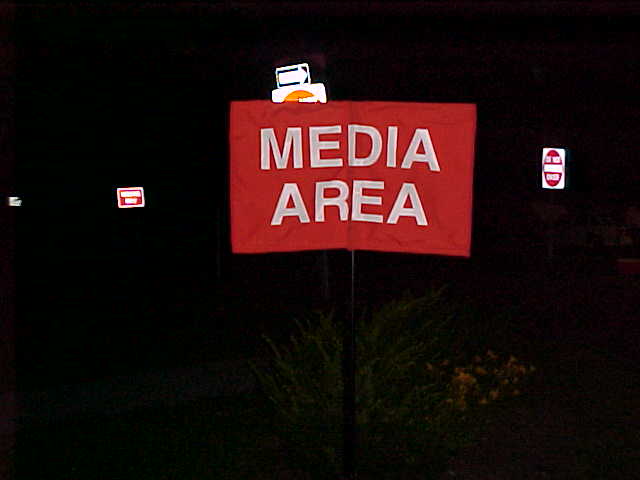In the disaster field office, there are three simple yet absolute rules to managing media relations. Businesses, celebrities, and even hospitals have created for themselves foibles and catastrophes due to a basic lack of ability to manage media relations and the press. These problems stem from the fact that most failed to understand that the press serves the same people that they serve. Whether you are a corporation, a small business, a healthcare facility, or a movie star the press speaks at one time en masse to your public. If you remember this simple fact it is then no great intellectual stretch to understand that by partnering with the press and the media you can communicate vital information to your entire market simultaneously.
Rule Number One: Don’t get in front of the camera!
This may be obvious but if it is not your job to speak to the press do not get in front of the camera. Moreover, ensure that your employees and staff do not get in front of the camera unless it is their job to interface with the media. Most media mishaps occur because the press is presented with multiple messages and good, honest reporters attempt to make some logical sense of these conflicting stories. Unfortunately no matter how good the reporter and how well-meaning your staff when conflicting stories enter the press simultaneously nothing but bad can come of it for your organization.
Rule Number Two: Do not lie!
Now this is probably good advice in life in general, but if you lie to the press they will catch you and then they will make it their mission in life to destroy your career because you have just done irreparable damage to theirs, you have damaged their credibility. The media succeeds because people trust them. If they violate that trust no matter how unintended or innocent the violation they lose the public trust. With this loss of credibility comes the loss of the ability to do their job. Therefore everything that you say must be absolutely true and absolutely consistent with what the reporter observes.
Rule Number Three: Remember how the press keeps score!
The media does not keep score the same way that you do.
- They do not count dollars.
- They do not count lives saved.
- They do not count how many movies they appear in.
The press keeps score either in terms of minutes of face time on camera or inches of newsprint. In order for the press to score they must capture 1.5 seconds of you, approximately 15 words in print, and surround it with several minutes of themselves, at least 2 inches of newsprint.
If you know what message you wish to communicate to your market, their audience, you must:
- Condense your message into a 1.5-second sound bite (fifty words for print)
- Ensure that message is absolutely true and consistent with what the reporter sees
- Deliver that same message regardless of the question asked
Do these three things and you will leave the reporter with only one choice, use your message or not score today. Under those circumstances, the media will use your message every time because they keep score based on minutes of face time or inches of newsprint, and to score they must surround your message with their voice or their prose.
Remember these lessons from the disaster field office and your next media encounter will serve to bolster your relationship with the media and your position both with the press and the community.










